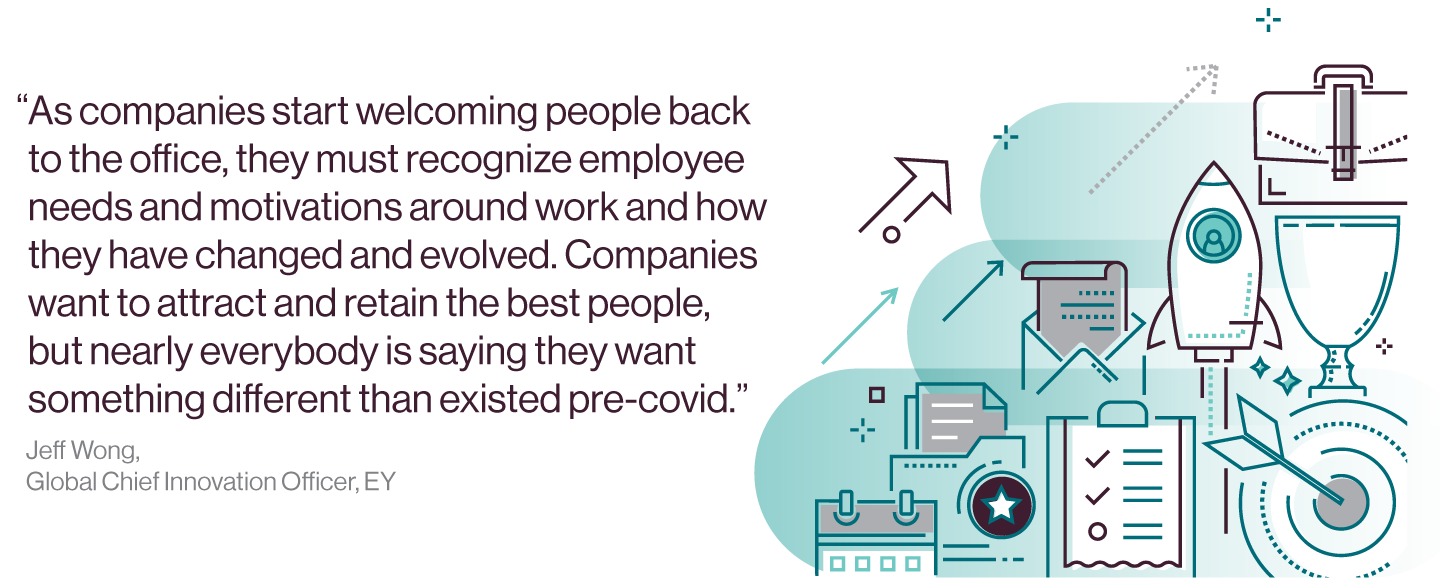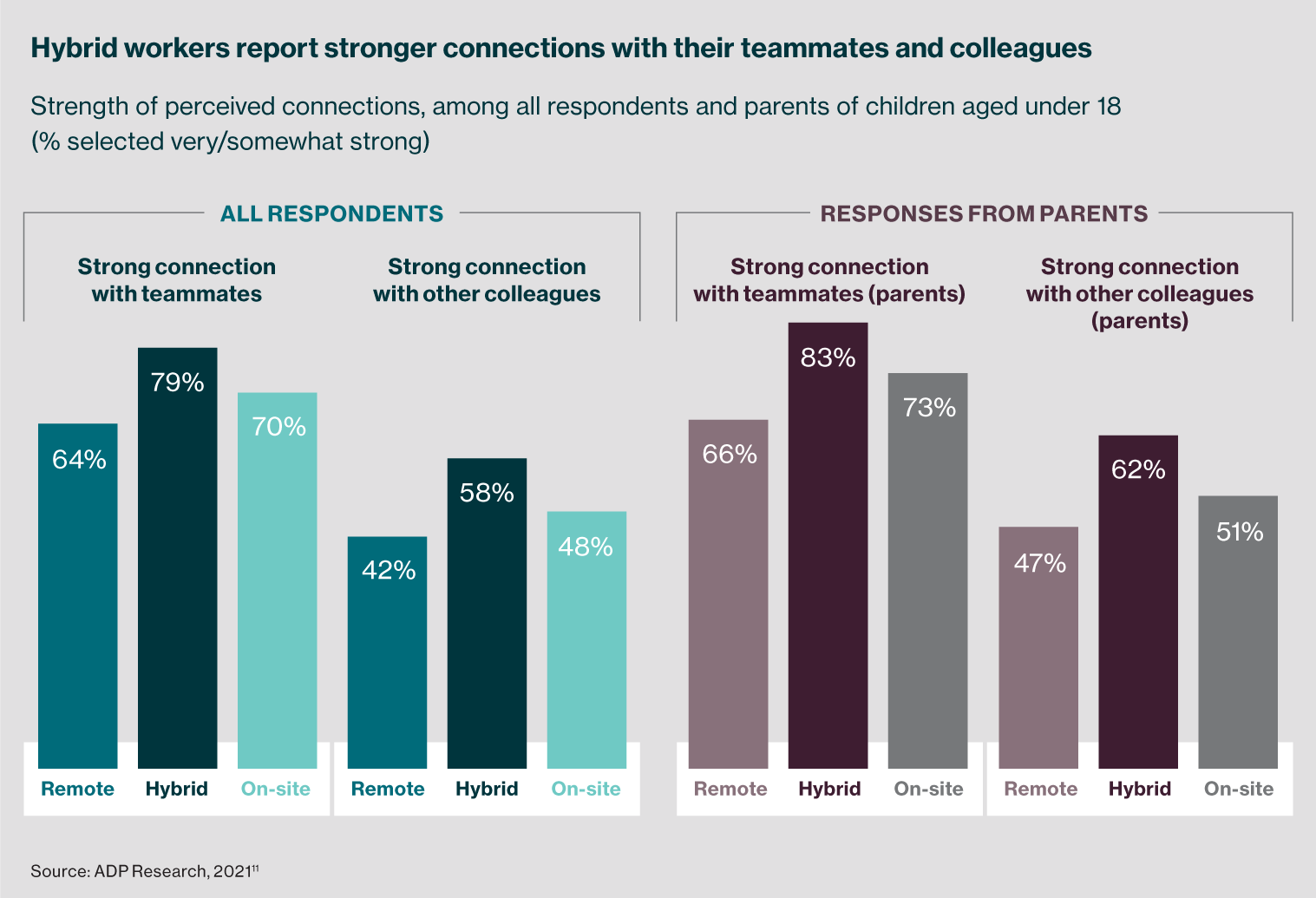Innovating for the hybrid future of work
In March 2020, companies large and small, across industries, and around the world, had to pivot nearly overnight to remote work because of pandemic-related shutdowns. In fact, over a third of US workers reported working remotely during that time, including nearly three-quarters of the highest-income workers. Digital meeting and collaboration tools such as Zoom, Microsoft Teams, and Slack became commonplace. Organizations figured out how to hire workers without ever seeing them in person. Many employees cheered the end of long commutes and more time with family, while others lamented the lack of boundaries between work and home.

Skepticism about how productive employees could be if they worked from home also eroded. An April 2021 study from the Becker Friedman Institute at the University of Chicago examined companies' post-covid remote work plans and found a predicted productivity boost of 5% for the US economy. And a December 2020 survey by PwC found that 34% of employees said they were more productive than before the pandemic, while over half of executives said average employee productivity had improved.
Now, an equally widespread disruption is underway in the form of hybrid work: while some organizations are insisting workers return to the office full-time, many are prepping for a new normal where employees spend some days in the office and some days working remotely, with a combination of virtual and in-person meetings and collaboration. A CNBC survey of executives in human resources, finance, and technology found that just under half of companies will use a hybrid work model in the second half of 2021.

I see hybrid work as one of those things companies have to get right," says Deniz Caglar, a principal in PwC's US organization strategy practice. We have to reinvent how we're going to work together and if we don't get the hybrid model right, the company is not going to be as productive. And in some industries, even a one to two percent productivity change can make a pretty big difference."
All of this is taking place in a business landscape where more and more employees are demanding continued flexibility post-pandemic. According to Accenture's Future of Work Study 2021, for example, 83% of employees prefer a hybrid work model. And companies are listening: they know the choices organizations make now will be crucial, especially as they race to attract and retain talent in a competitive marketplace.

As companies get ready to start welcoming people back to the office, they must recognize employee needs and motivations around work and how they have changed and evolved," says Jeff Wong, global chief innovation officer at EY. Companies want to attract and retain the best people, but nearly everybody is saying they want something different than existed pre-covid."
Organizations around the globe are rising to the challenge, working to establish the right processes, innovative technologies, and leadership support to help them meet this powerful moment.